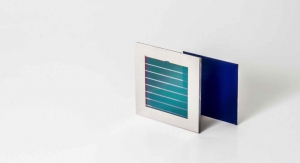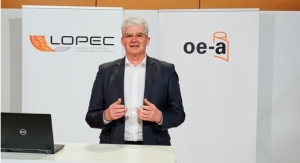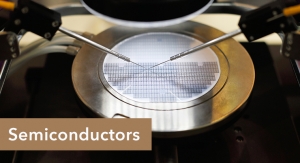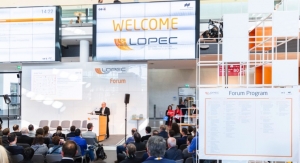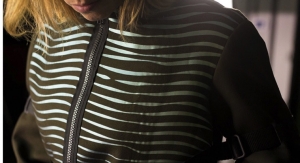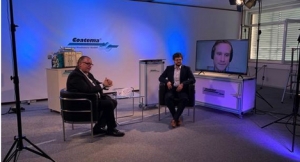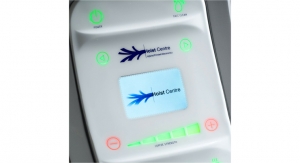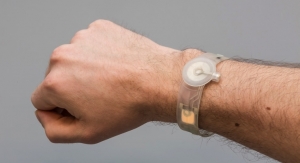05.23.18
Researchers from Holst Centre, an open innovation initiative of imec and TNO, have demonstrated a new class of flexible, large-area sensor technology for detecting finger- and palm prints. At less than 0.2 mm thick and with no bulky prisms or moving parts, the new sensors can be embedded into objects such as mobile phones and door handles to create “invisible” yet secure access control systems that can tell if the print is from a living person rather than a phantom or counterfeit.
The technology, which paves the way to low-cost sensors for large-area finger- and palm print scanners, will be shown at the Innovation Zone at the Society for Information Display (SID) Display Week 2018 in Los Angeles, USA from May 22-24, and the Imec Technology Forum (ITF) in Antwerp, Belgium from May 23-24. Two demonstrators will showcase the technologies potential for high resolution and large active areas.
Measuring 6 x 8 cm, a 200-ppi demonstrator is large enough for four-finger scanners that are currently used by border control authorities and delivers sufficient image quality for basic identification applications. Meanwhile, a slightly smaller 500-ppi demonstrator offer even higher image quality, compatible with FBI standards and enough for law enforcement agencies to visualize minutia and pores for more robust identification.
As with Holst Centre’s earlier flexible X-ray detectors, the fingerprint sensors combine an organic photodiode frontplane, an oxide thin-film transistor (TFT) backplane (originally developed for flexible displays), and a thin-film barrier for protection against the environment. All three technological elements have been or are being transferred to industry for scale-up and commercialization.
By using different photodiode materials, the sensors’ capabilities can be extended to other wavelengths such as near infrared (NIR). This could enable new identification verification modes based on for example the pattern of veins in a hand, which is believed to be even more specific to an individual than a fingerprint. NIR sensors could also be used in other applications, such as blood oxygenation monitoring, or for night vision and 3D facial recognition.
“The flexible fingerprint sensor demonstrator shows the versatility and maturity of the flexible electronics technologies that Holst Centre is developing,” said Hylke Akkerman, program manager at Holst Centre.
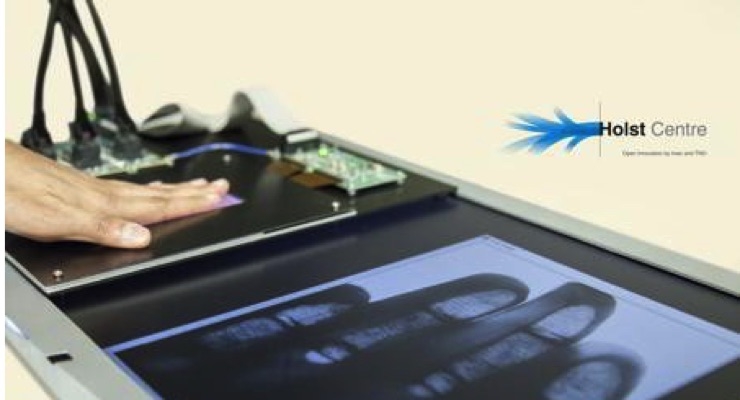
Holst Centre’s fingerprint sensor. (Source: Holst Centre)
The technology, which paves the way to low-cost sensors for large-area finger- and palm print scanners, will be shown at the Innovation Zone at the Society for Information Display (SID) Display Week 2018 in Los Angeles, USA from May 22-24, and the Imec Technology Forum (ITF) in Antwerp, Belgium from May 23-24. Two demonstrators will showcase the technologies potential for high resolution and large active areas.
Measuring 6 x 8 cm, a 200-ppi demonstrator is large enough for four-finger scanners that are currently used by border control authorities and delivers sufficient image quality for basic identification applications. Meanwhile, a slightly smaller 500-ppi demonstrator offer even higher image quality, compatible with FBI standards and enough for law enforcement agencies to visualize minutia and pores for more robust identification.
As with Holst Centre’s earlier flexible X-ray detectors, the fingerprint sensors combine an organic photodiode frontplane, an oxide thin-film transistor (TFT) backplane (originally developed for flexible displays), and a thin-film barrier for protection against the environment. All three technological elements have been or are being transferred to industry for scale-up and commercialization.
By using different photodiode materials, the sensors’ capabilities can be extended to other wavelengths such as near infrared (NIR). This could enable new identification verification modes based on for example the pattern of veins in a hand, which is believed to be even more specific to an individual than a fingerprint. NIR sensors could also be used in other applications, such as blood oxygenation monitoring, or for night vision and 3D facial recognition.
“The flexible fingerprint sensor demonstrator shows the versatility and maturity of the flexible electronics technologies that Holst Centre is developing,” said Hylke Akkerman, program manager at Holst Centre.

Holst Centre’s fingerprint sensor. (Source: Holst Centre)

